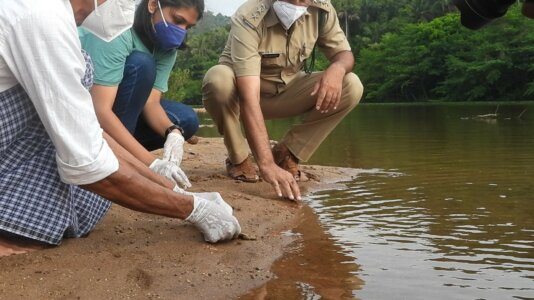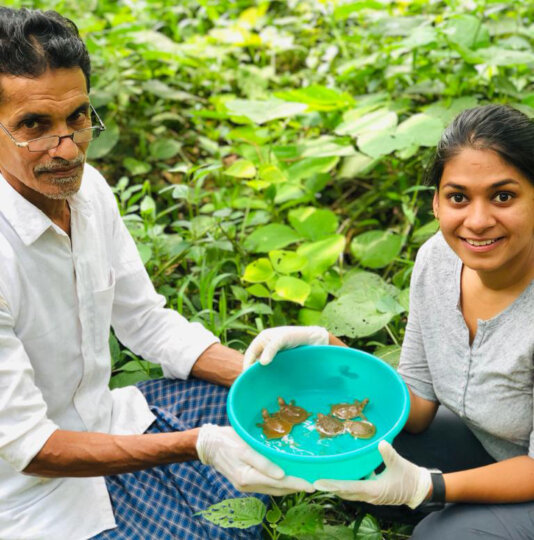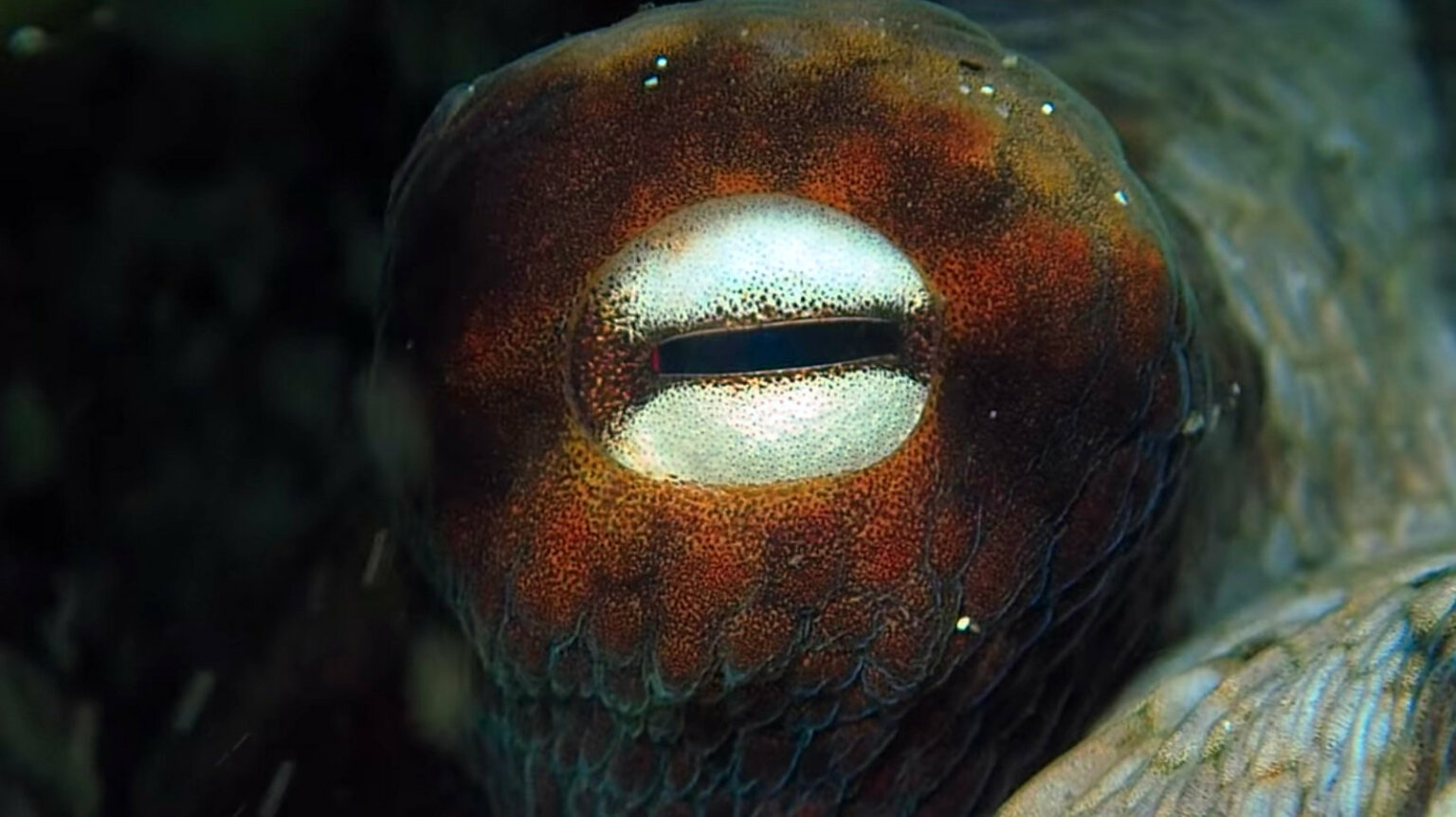- About
- Topics
- Picks
- Audio
- Story
- In-Depth
- Opinion
- News
- Donate
-
Signup for our newsletterOur Editors' Best Picks.Send
Read, Debate: Engage.
| July 11, 2022 | |
|---|---|
| topic: | Conservation |
| tags: | #India, #Cantor’s giant softshell turtle, #freshwater turtle, #mining |
| located: | India |
| by: | Bindu Gopal Rao |
Growing up in Agra, Uttar Pradesh’s fourth-most populous city, Ayushi Jain had no opportunity to visit a national park or a wildlife sanctuary. And while the frogs and lizards in her backyard had always intrigued her, a career in wildlife and conservation seemed like a distant, unfeasible dream.
It was when Jain finally enrolled in a Bachelor’s degree program in zoology at the Dayalbagh Educational Institute in Agra that pursuing a career in wildlife ecology and conservation began to seem like a possible endeavour.
After taking a gap year to get hands-on experience in the field, Jain pursued a master’s degree in ecology and environmental sciences at Pondicherry University.
In 2021, Jain won the The Habitats Trust’s (THT) Grant and was given the Conservation Hero Winner award for her work on conserving the Cantor’s giant softshell turtle. Jain was regognised for her project to create baseline ecological data and drive community-based conservation efforts to save this rare species, which is endemic to the Chandragiri River and Valapattanam River regions in northern Kerala.
FairPlanet had a tête-à-tête with Jain about the various threats facing this rare turtle species and the work she does to protect it.
FairPlanet: What attracted you to study turtles?
It was during my first internship that I was given an opportunity to monitor the diet and provide primary care to captive freshwater turtles and tortoises. At the time, I had no clue how unique, threatened and poorly studied this group of animals is.
During the time I spent working with captive freshwater turtles, I read about their ecology and conservation challenges. I realised the numerous knowledge gaps about this group, which made me decide to pursue my career studying it and contributing to its conservation.
Tell us about the Cantor’s giant softshell turtle. What makes it so rare?
Cantor’s giant softshell turtle is one of the largest softshell turtles in the world, but humans have very little knowledge of its biology and ecology. It is the most widespread softshell turtle species in Asia, and inhabits in as many as 11 countries.
The species spends most of its life buried under the riverbed and can go long intervals of time without surfacing. This secretive behaviour of the species makes it extremely difficult for us to spot and study the animal.
Unlike most freshwater turtles, which bask during the day, this turtle does not seem to exhibit the same behaviour. Due to the species’ habits, the sighting of the species is extremely rare.
Although distributed widely, scientists believe that its populations are continuously declining due to increased anthropogenic pressures on the habitats of this turtle.
When did you first find out about the Cantor’s giant softshell turtle?
As I started reading about various freshwater turtles and tortoise species in India, I stumbled upon a published monograph on Cantor's giant softshell turtle in 2016. However, it wasn’t until an opportunity opened in 2018 to study this species with the EDGE of existence programme that I noticed various knowledge gaps and the conservation urgency to save the future of this species in India.
How did you first sight the Cantor’s Giant SoftShell Turtle in Kanathur village, Kerala?
At the time, I was staying at the ZSI, Calicut campus when Dr. Jafer Palot, who had previously reported multiple records of Cantor’s giant softshell from Kerala, informed me that a "large turtle" has been seen in a small, isolated pool in Payaswini river in Kasaragod.
I joined a group from the Kerala Forest Research Institute (KFRI), who were also visiting the same area, to undertake a fish survey. After reaching the area, I spoke to the local people who sighted the turtle. The description suggested that it could be the species I was looking for.
I spent the next two days scanning the pool with the help of local community members and children. On the second day, we finally spotted the turtle surfacing for a few seconds. I took some photos, which were later confirmed as Cantor’s giant softshell turtle.
Since then, I have spent three years in the area to understand the species’ ecology and involve the communities in its conservation.
Where else in India and abroad are these turtles sighted?
It is unclear to say where the turtle is still present or seen. The species distribution in Karnataka has not been confirmed with any sightings in the wild. My team and I will be surveying the Netravati River in Karnataka in the coming months to confirm its presence.
Currently, a population in Cambodia is being studied and being conserved by WCS Cambodia.
How do you systematically document sightings of this species?
Interviews and social surveys along the studied river help us identify key stakeholders involving fishers, farmers and sand miners. We then identify the priority habitat areas where multiple sighting records, by-catch reports and nesting reports took place. In each of those identified locations, we will engage with the nearby communities through workshops, training programs and interviews. We identify members who are willing to be the key informants in each of these areas.
These key informants inform us of future sightings and nesting events, which are then protected in collaboration with these communities and the forest department.
In cases of by-catches, forest department personnel and our team report to the area to rescue the turtles and release them back safely to the river.
What kind of work do you do with riverside communities to create awareness about freshwater turtles?
I created an alert network where I have identified and involved community members living along the Chandragiri River to report sightings, by-catch events and nesting reports of the species.
I have conducted multiple workshops to train them in the identification of various turtles present in the study area. We have also trained the riverside communities in the handling of turtles and primary response in case of by-catches. Additionally, we have distributed training material in Malayalam including a handbook on freshwater turtles and tortoises of Kerala, a detailed brochure on the species, posters, stickers, and diaries free of cost to the communities. Currently, we have employed multiple community members in conducting nest surveys and nest protection programs alongside the Chandragiri-Payaswini river.
You said that social science is an important aspect of conservation programmes. Please elaborate.
Communities residing and cohabiting in the same areas as the threatened species can play a substantial role in the conservation of species and habitats in the long run. The impact communities have on the habitats and their interaction with the species decide the fate of the concerned species.
Scientists, conservationists and forest departments will come and go - but the communities will always reside there.
Additionally, the traditional and local ecological knowledge can be a very effective and inexpensive tool to understand the species, identify the threats and problems as well as understand the perspective of the communities towards the species.
It is crucial that we understand the social aspects before forming management strategies and policies, as only then the suggested strategies can be sustainable in the long-term conservation programmes.
"Scientists, conservationists and forest departments will come and go - but the communities will always reside there."
What are the risks posed to the turtles' habitat?
Rivers are continuously being modified due to agricultural pressure and the river water is increasingly used for irrigation. Illegal sand mining activities are putting immense pressure on the species’ habitat and result in changes to the river morphology. Multiple nesting grounds and nests have been destroyed due to sand mining activities.
Another major threat to the habitat is small and large dams and check dams. Dams are causing flooding of sandbanks during the nesting period leading the nests to be drowned. Check dams and dams also hinder the movement of individuals along the river, and potentially act as barriers.
What are some other threats to the species’ survival?
The species also face threats due to hunting pressures for their meat and eggs in part of Southeast Asia. Additionally, species also get caught in fishing nets and hooks as by-catches; they often end up either being consumed or released with the hook inside the mouth cavity, which can be fatal.
What kind of conservation measures you are taking to tackle these threats?
We have formed a team with members from local communities to report any by-catch and nesting events. Currently, we have hired five community members to protect the nests and nesting grounds in the study area.
We have collaborated with the forest department and existing Van Sanrakshan Samithi (VSS) to undertake the rescue and rehabilitation of the incidentally caught turtles. Additionally, the district collector has passed a proposal for regular monitoring of sand mining activities and regulations of dams to prevent the degradation of the species’ habitat.
What kind of support, from the government or other parties, is required in your view to conserve these species?
A majority of threatened softshell turtles are present outside of any Protected Area Network, which leads to decreased protection despite their conservation status. Governmental policies need to be more stringent to conserve the endangered and critically endangered species outside the protected area networks.
Secondly, these species should be kept in mind and environmental impact assessments should be made mandatory before the construction of dams in the rivers.
More state and central funding should be made available to the department to provide alternate occupations to sand miners, and to conduct regular patrolling to minimise illegal sand mining activities.
More international and national funding agencies should make available targeted grants for freshwater turtles’ conservation in India, considering the diversity and level of threats.
Image by Ayushi Jain.



By copying the embed code below, you agree to adhere to our republishing guidelines.
